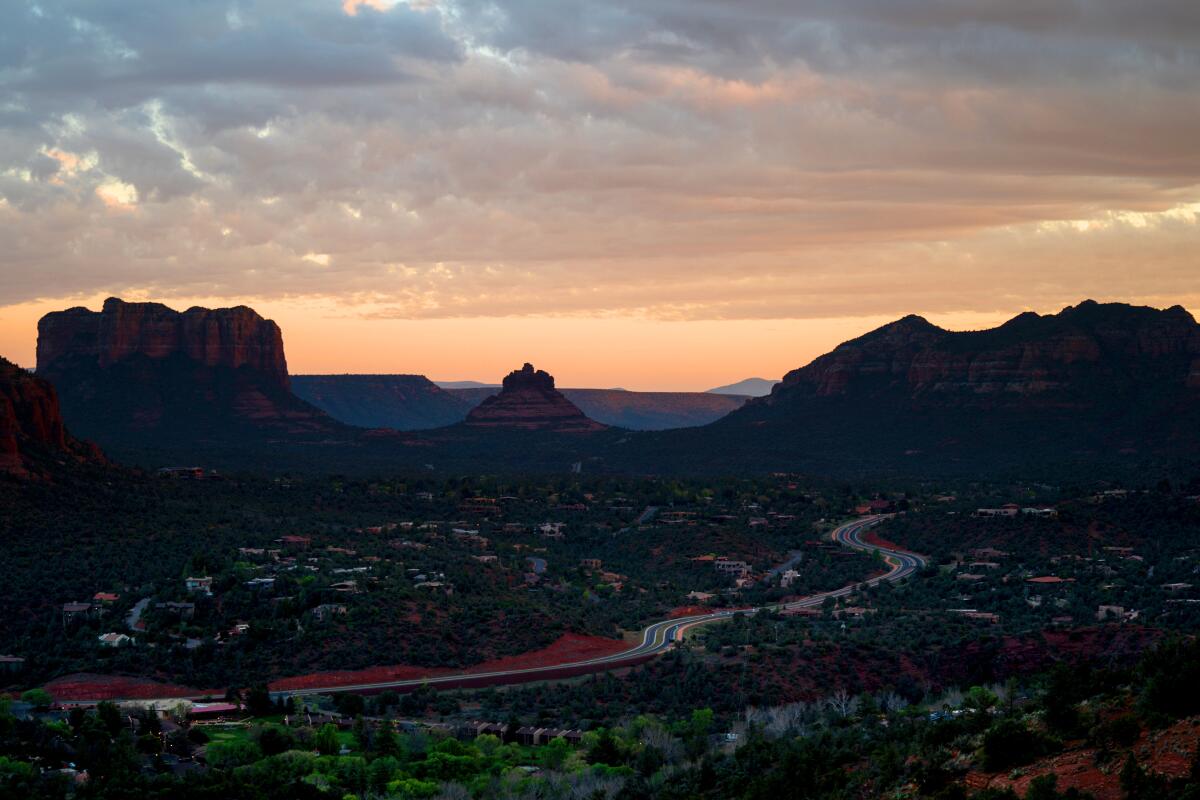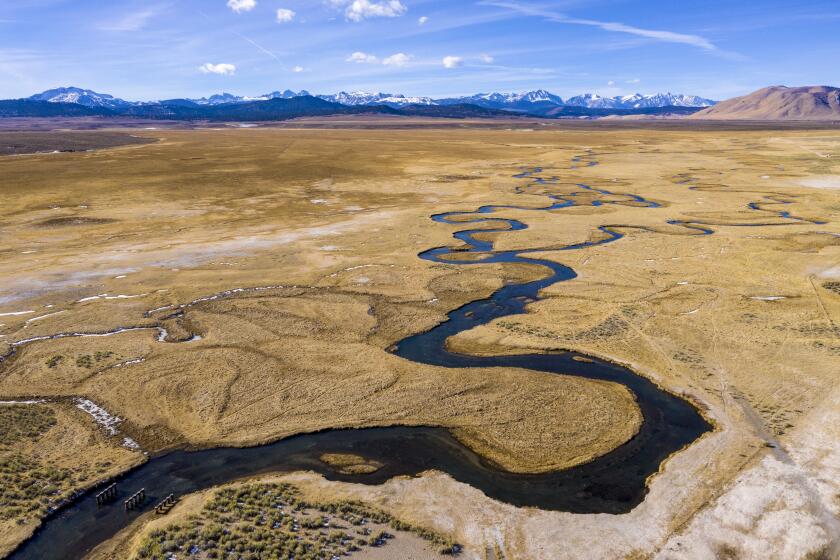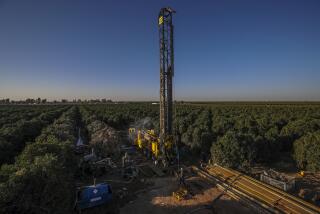The current drought is worldwide. Here’s how different places are fighting it

The world is facing unprecedented levels of drought.
In the U.S., nearly half the mainland is currently afflicted, according to the National Oceanic and Atmospheric Association. The situation is especially dire in the Northwest, which is facing some of its driest conditions in over a century following a heat wave that killed hundreds of people.
No continent, except Antarctica, has been spared, according to the SPEI Global Drought Monitor.
In Brazil, the current drought is one of the worst ever recorded. Coffee production is expected to fall 23% this year, and low reservoir levels mean the country can’t fully utilize its hydroelectric plants, driving up electricity bills.
In Madagascar, drought has left hundreds of thousands of people malnourished, pushing the country to the edge of famine.
Drought — low precipitation leading to water shortage — has existed forever. But scientists say that rising global temperatures and shifting precipitation patterns are already leading to more frequent droughts and that the situation is likely to get worse.
Experts support the pace of Newsom’s current drought response, but some scientists urge more action.
In the last two decades alone, the United Nations estimates drought has affected 1.5 billion people and led to economic losses of at least $124 billion.
Water conservation has never been more crucial.
How governments are trying to reduce water use
Across the globe, governments are taking action to curb water use.
Bozeman, Mont., recently restricted lawn watering to two days a week. Mexico is releasing silver iodide into the clouds to stimulate rain. Maui County announced it will fine those who irrigate, water their lawns, wash their vehicles or otherwise use water for “nonessential activities.”
It’s too soon to know if these recent efforts will work.
The current drought has also added a sense of urgency to find longer-term plans to conserve water.
California gets enormous floods roughly once a decade, says geologist Jeff Mount. He says that now is the time to prepare.
In Arizona, the state department of water resources has long been trying to reduce use of groundwater — which supplies about 39% of the state’s water — so that water returns to the aquifers at the same rate it is withdrawn. That effort is especially important this year, because drought is diminishing the state’s other main water source, the Colorado River.
But where to cut groundwater use has been a source of conflict.
In April, the state proposed rules that would require urban golf courses using groundwater to lower their use by a little over 3% — a “relatively modest reduction” in the words of the department director, Tom Buschatzke.
In a public meeting, the president of Arizona’s golf course superintendents chapter pushed back, calling the proposal “the biggest issue we’ve ever faced.” He urged the state to not rush its decision and pointed out that the golf industry had already made strides in water conservation.
Conservation advocates say that while cities are worthy targets for cuts, any effective strategy must also include agriculture, which the USDA says accounts for 80% of the nation’s water consumption.
Water rights records are completely buried, so it’s nearly impossible to determine who can legally use water at any given time or place.
“We cannot get out of water scarcity and the threat of water shortages if we can’t reduce how much water we’re using on irrigated farms,” said Brian Richter, president of Sustainable Waters, a nonprofit based in Utah and Virginia. “You can erase all the cities across the map in the Western U.S. and you’d still have water shortages on farms.”
One water dispute over agriculture is playing out in Oregon, where Native Americans hold senior legal rights to the Upper Klamath Lake through a treaty with the federal government.
The lake is a major supplier of water to the Klamath Tribes and home to the endangered and culturally significant sucker fish. Non-native farmers in the area also depend on the lake, which is used irrigate over 130,000 acres of fields.
When drought struck the region this year, those farmers lost their water allocation. The situation has grown tense, with some farmers threatening to use force to take water from the lake.
“Irrigated agriculture has been developed unchecked,” said Don Gentry, chairman of the Klamath Tribes. “The water was overpromised to folks by the federal government and we need to look at sustainability ... there isn’t enough water to go around.”
Toward a more sustainable California
Get Boiling Point, our newsletter exploring climate change, energy and the environment, and become part of the conversation — and the solution.
You may occasionally receive promotional content from the Los Angeles Times.
As for more unconventional approaches, one standout it Israel.
It invested about $500 million in the world’s largest desalination plant, which satisfies 20% of the country’s municipal water demand, according to one of the companies that built the plant.
Still, it’s not enough. The Israeli government recently warned that the water crisis is so severe that by next summer it may struggle to provide its residents with enough water to meet their basic needs.
Two cities that found solutions
Historically, as a city grew, so did its water consumption — the Romans, for example, built aqueducts to support their rapidly growing population.
That pattern has proved unsustainable. Ultimately, conservation depends on reducing per capita water consumption so that cities and economies can grow while the overall need for water plateaus or declines.
State leaders in climate change and water resources warn that California’s drought is already causing dire conditions for people, plants, animals and land.
Some cities have already achieved that.
San Antonio, Texas, long struggled with its dependency on the Edwards Aquifer — until the Sierra Club filed a lawsuit against the U.S. Fish and Wildlife Service in 1991 arguing that the city was pumping too much water and threatening seven endangered aquatic species.
The environmental nonprofit won in court, forcing Texas to create a system limiting withdrawals from the aquifer.
Today, San Antonio is considered “best in class when it comes to water conservation,” said Richter. According to the nonprofit Texas Living Waters, San Antonio has grown by 80% in the past 30 years but has decreased its per-person water use by 40%.
The city offers rebates for residents who install pool filters or convert grass into patios, along with other conservation efforts involving irrigation, landscaping, and water flow sensors. The Southern Nevada Water Authority, which serves almost three quarters of the state’s population, took a similar approach by offering cash to residents who replace grass with desert landscaping.
Cape Town, South Africa was forced to confront its water use after nearly running dry in 2018.
The city was able to reduce its water consumption by almost 60% during a major 2018 drought and has kept it low since, said Xanthea Limberg, a local appointed official and a mayoral committee member for waste and water in Cape Town.
She said the city cut water use during the drought by installing water meters that could enforce water restrictions, instating tariffs, and creating targeted campaigns.
The city now consumes about 38% less water than it did before the drought, according to Limberg.
“I definitely think that there has been a permanent behavior shift,” she said. “There’s definitely been a greater awareness to conserve water, and how incredibly finite this resource is, and how vulnerable we are if we face a shortage of water.”
More to Read
Start your day right
Sign up for Essential California for news, features and recommendations from the L.A. Times and beyond in your inbox six days a week.
You may occasionally receive promotional content from the Los Angeles Times.










